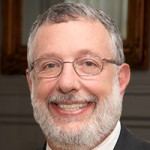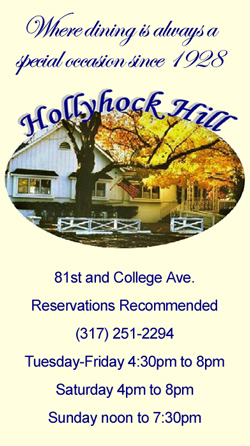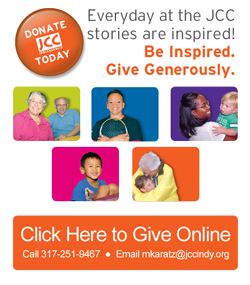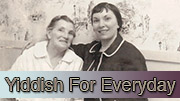Dec. 20, 2013, 17 Tevet 5774, Shemot Exodus 1:1–6:1
 Pirke Avot 5:23 – Judah ben Teima used to say: Be strong as the leopard, swift as the eagle, fleet as the gazelle, and brave as the lion to do the will of your Father in Heaven. He also used to say: The impudent are for Gehenna and the affable for Paradise. (He used to pray): May it be thy will, O Lord our G-d and G-d of our fathers, that the Temple be rebuilt speedily in our days, and grant our portion in your Torah. [whohit]Shabat Shalom – Be Strong As The Leopard, Swift As The Eagle[/whohit]
Pirke Avot 5:23 – Judah ben Teima used to say: Be strong as the leopard, swift as the eagle, fleet as the gazelle, and brave as the lion to do the will of your Father in Heaven. He also used to say: The impudent are for Gehenna and the affable for Paradise. (He used to pray): May it be thy will, O Lord our G-d and G-d of our fathers, that the Temple be rebuilt speedily in our days, and grant our portion in your Torah. [whohit]Shabat Shalom – Be Strong As The Leopard, Swift As The Eagle[/whohit]
I sat there in San Diego at the Erev Shabbat and Shabbat morning worship services thinking about my mom and when she attended the UAHC-NFTS Biennial conventions in the late 1960s and 1970s realizing that this wasn’t her Reform Judaism anymore. The music, the liturgy, the kippot, the tallitot, the dancing, the Torah reading are not things she would have recognized. Like many of our parents, grandparents or great-grandparents who grew up in Reform Judaism, my mom experienced a different kind of Reform Judaism.
For those of you new to Reform Jewish life, it is hard to explain the Reform Jewish experience of the late 19th and early to mid 20th centuries. There was little Hebrew in the service. Worshippers were mostly passive participants in a service led by a rabbi with music sung by a choir. The sermon was the focal point of the service. Torah was rarely read and in some cases rarely removed from the Ark. The choreography of when we stand and sit isn’t exactly as we know it today. Bar mitzvah didn’t exist or was a rarity. Confirmation was a congregational celebration. The term we use today for this Reform Jewish experience is Classical Reform.
I don’t want to diminish Classical Reform. It sustained an emerging non-Orthodox Jewish experience for many decades. Until the mid-1960s or so when the baby-boomers began to seek new liberal and spiritual Jewish experiences set within a Reform Jewish backdrop, this was the norm. Most Reform Jewish congregations used the same prayerbook and heard the same songs allowing the Reform Jew, wherever he or she went, to be comfortable and familiar with the service.
Let me say this, and I’ve said it before, Reform Judaism isn’t a movement of “don’ts.” It never said don’t learn Hebrew or don’t keep kosher or don’t worry about Shabbat or don’t come to services or don’t do this or that. Reform Judaism believes in autonomy and freedom of choice set within the concept of knowledge and understanding. It is why Reform Jewish congregations try to teach about Judaism so the members can understand what it means to be Jewish and live a Jewish lifestyle that is personally comfortable and legitimate and not Jewishly hypocritical.
Reform Judaism is always evolving and adapting to the world around it. The youth of the late 1960s wanted ways to connect with being Jewish in a way that their parents hadn’t offered or practiced. Debbie Friedman responded with music that resonated and rabbis created a new kind of prayerbook that had more choices and prayers and readings.
As women searched for matriarchs that spoke to them and a God that wasn’t male in voice, Sarah, Rebecca, Rachel and Leah were brought into the liturgy and the male “He and Lord” were replaced by “Adonai and God.” These are just a few of the changes not forgetting that we have female rabbis and cantors, congregational presidents, and more. Add to this the fact that some Jews choose to wear a kippah or a tallit, become adult bar/bat mitzvah, study, sing, dance and you have a very different Reform Judaism, but one that is totally in line with the original intent of our founders that engages modernity and allows people to find their own Jewish voice.
Yes, I sat there wondering what my mom would think of all this. Her parents and grandparents helped found and sustain this movement, but it didn’t change much until her children came along and change it has. I think she would sit quietly and scratch her head and wonder what happened. I think she would be pleased to see her children leading and engaged in this new Reform Judaism. It wasn’t for her…but she liked that it was for us. Reform Judaism is still changing. Some of the adaptations might not be for me, but if my children enjoy and engage – what more could I ask for?
For many years I have finished my “Shabbat Shalom” with the words, “When you light your Shabbat candles.” My mom never lit Shabbat candles or had “Shabbat candlesticks” until I brought her a pair of olivewood candlesticks made in the Old City of Jerusalem in 1975. Even then, I think she only lit Shabbat candles when I’d come home for a visit over Shabbat. That part of Shabbat celebration wasn’t a part of her Jewish life, but she saw that it was mine.
Since beginning this column in the late 1990’s, I’ve hoped that I could encourage more people to at least just stop and think about Shabbat and, maybe, if nothing else, to take a moment to light Shabbat candles or say the bracha over wine and challah. It wasn’t my mom’s Reform Jewish practice, but I hope I can encourage you to make it a part of yours.
So, when you light your Shabbat candles this evening, light one for the many possibilities that exist within Judaism and Jewish practice. You never know what will stir your soul. Light the other candle to help lead us and the next generations of Jews into a Jewish world filled with the presence and energy of God.
Rabbi Adland has been a Reform rabbi for more than 25 years with pulpits in Lexington, Ky., Indianapolis, Ind., and currently at Temple Israel in Canton, Ohio. Email: j.adland@gmail.com.






